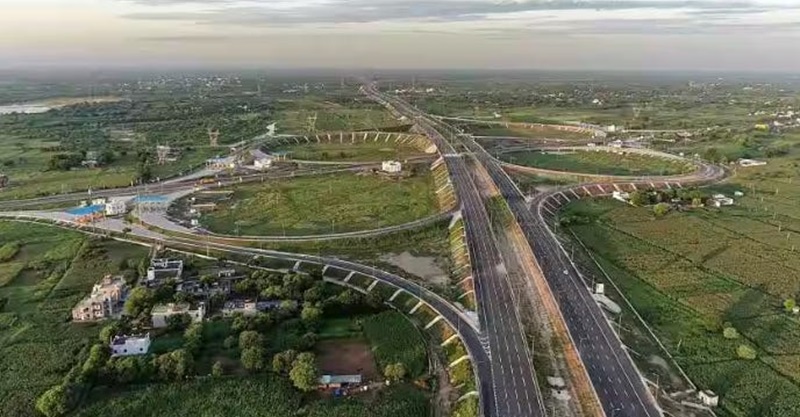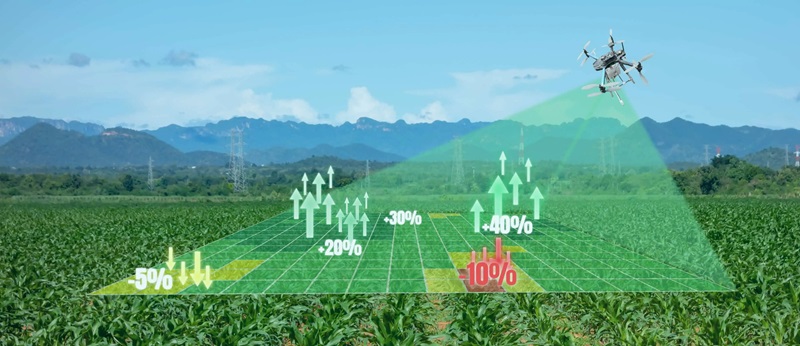The Role of Technology in Transforming Agriculture: Precision Farming, Smart Irrigation Systems, and Drones in Agri

Agriculture, a cornerstone of the Indian economy, contributes approximately 13.9% of the GDP while employing nearly 54.6% of the workforce. From being the principal contributor to India's GDP at independence, agriculture now accounts for over 20% of the nation’s income, underscoring its continued significance. To unlock a brighter future, the infusion of advanced technology is imperative.
Seventy-seven years ago, agriculture was the engine of India’s economy, contributing more than half of the national GDP. Today, while India remains a global leader in food production, the sector’s contribution to GDP has waned, revealing an urgent need for revitalisation. Addressing this requires a transformative approach, leveraging technology to enhance productivity, efficiency, and profitability.
The Ascendancy of AgTech
Agricultural Technology (AgTech) is revolutionising the sector by placing farmers at the core of the agricultural ecosystem. Historically, farmers operated in a fragmented market dominated by local mandis where produce was auctioned. Today, digital technology empowers farmers through integrated solutions spanning finance, inputs, advisory services, and more.
AgTech in Action: Revolutionising the Value Chain
AgTech is a transformative force in agriculture, addressing critical challenges through innovative technologies:
- Direct-to-Farmer Solutions: Companies like UPL use digital platforms to offer mechanisation services and financing directly to farmers, eliminating traditional middlemen.
- Financial Technology: The YONO Krishi app by the State Bank of India exemplifies how financial institutions provide essential finance, inputs, and advisory services through technology.
- Mechanisation as a Service: Mahindra’s tractor rental services facilitate equipment access without ownership burdens.
- Supply Chain Integration: ITC’s e-Choupal network and the ITCMAARS super app integrate procurement and market linkages into a unified digital platform.
These advancements are expected to boost farmers' incomes by 25-35% and inject $95 billion into the Indian economy by 2030, driven by reduced input costs, increased productivity, and improved price realisation.
Precision Farming: A Paradigm Shift in Crop Management
Precision farming epitomises the confluence of technology and agriculture, heralding a new era of field-level management. At its core, precision farming employs cutting-edge information technology (IT), geospatial techniques, and remote sensing tools to tailor agricultural practices with unparalleled accuracy.
GPS and GIS Technology: Global Positioning Systems (GPS) and Geographic Information Systems (GIS) are instrumental in crafting precise field maps. These tools enable farmers to conduct targeted interventions, optimising resource application and maximising yields.
Remote Sensing: The deployment of drones and satellites equipped with sensors offers granular insights into crop health, soil conditions, and pest infestations. This real-time data facilitates informed decision-making, enabling proactive measures to address emerging issues.
Variable Rate Technology (VRT): VRT empowers farmers to apply inputs such as fertilisers and pesticides at variable rates across different sections of a field. This approach not only optimises resource use but also minimises environmental impact, reflecting a commitment to sustainable farming practices.
The integration of these technologies enhances operational efficiency, augments crop yields, and reinforces the sector's resilience against environmental fluctuations.
Smart Irrigation Systems: Revolutionising Water Management
Water management is a critical aspect of agriculture, and smart irrigation systems represent a significant leap forward in this domain. These systems leverage real-time data to optimise irrigation schedules and quantities, ensuring precise water delivery tailored to crop requirements.
Soil Moisture Sensors: By monitoring soil moisture levels, these sensors provide valuable data that informs irrigation practices. This precision prevents both over- and under-watering, promoting healthier crops and conserving water resources.
Weather Forecasting Integration: Incorporating weather forecasts into irrigation systems allows for dynamic adjustments based on anticipated weather conditions. This proactive approach mitigates water wastage and enhances the system’s overall efficiency.
Automated Irrigation: The advent of remote-controlled irrigation systems via smartphones or computers enhances convenience and precision. This technology not only simplifies management but also ensures that irrigation practices are both effective and responsive to real-time conditions.
Smart irrigation systems stand at the intersection of technology and sustainability, optimising water use while fostering robust crop growth.
Drones in Agriculture: A Game-Changer for Modern Farming
Drones have emerged as a transformative force in agriculture, offering a diverse range of applications that extend beyond traditional farming methods.
Crop Monitoring: Drones equipped with multispectral and thermal sensors provide comprehensive insights into crop health. By identifying stress areas and potential disease outbreaks, these tools enable farmers to take timely corrective actions.
Field Mapping: High-resolution drone maps facilitate soil analysis, planting strategies, and ongoing crop monitoring. These detailed maps support precision farming efforts by providing critical spatial data.
Spraying and Seeding: The utilisation of drones for precision spraying and seeding ensures even distribution of inputs, reducing manual labour and enhancing efficiency. This application optimises resource use and promotes uniform crop development.
The integration of drones into agricultural practices enhances operational efficiency, supports data-driven decision-making, and contributes to sustainable farming.
Government Initiatives: Enabling Growth
The Indian government has embarked on several initiatives to foster the growth of agtech:
- Farmer-Producer Organisations (FPOs): The establishment of over 10,000 FPOs, supported by a $750 million grant, aims to consolidate the fragmented farming base, facilitating easier access to agtech solutions.
- Agristack: A unified agricultural database linked to farmers' land holdings will enable customised solutions based on specific needs.
- Digital Soil-Health Cards: These cards map soil composition to promote precision farming and tailor offerings.
- Direct Benefit Transfer in Fertilizer Sales: This initiative seeks to reduce transportation leakages and maintain affordability for smallholder farmers.
- National Agriculture Market (eNAM): An electronic trading portal that connects mandis, ensuring better prices through a transparent auction process.
These policies are instrumental in shaping an agtech ecosystem that supports farmers' needs and drives sectoral growth.
Investment Trends: What Investors Seek
The agtech sector in India has garnered significant attention from venture capitalists, with investments in 2022 reaching over $1.2 billion. Investors focus on several critical factors:
- Agtechs that offer a broad range of services across the value chain attract substantial investment.
- Combining physical and digital infrastructure is crucial, especially in rural areas where physical touchpoints complement digital solutions.
- Successful agtechs find effective ways to monetise their offerings, balancing between advisory services and tangible products.
- Agtechs with minimal reliance on physical assets can scale rapidly and efficiently.
Categories such as downstream agtechs, end-to-end ecosystems, digital solutions, and agribiotech are seeing increased investment, reflecting a shift towards fundamental improvements in farming practices and climate risk management.
Future Prospects of Agtech In India
As India’s agricultural sector continues to evolve, technological advancements offer a pathway to revitalise the industry. The convergence of precision farming, smart irrigation, and drone technology holds the promise of not only boosting productivity but also driving sustainable growth and economic prosperity in rural areas.
India’s agricultural heritage, characterised by its ability to nourish both the nation and the world, is poised for a renaissance through digital innovation. By harnessing these technologies, the sector can achieve new heights of efficiency, productivity, and sustainability, paving the way for a prosperous future.








